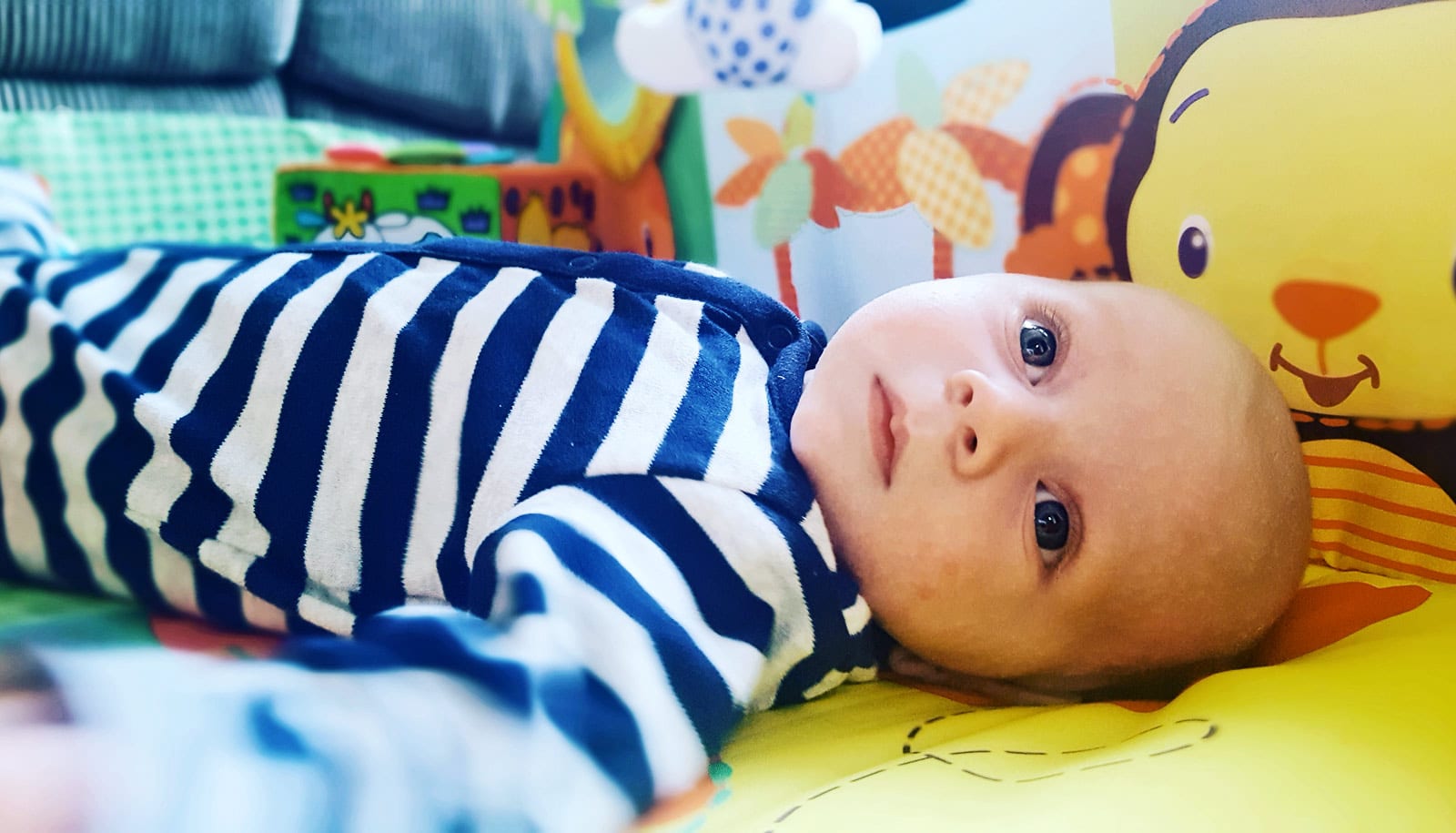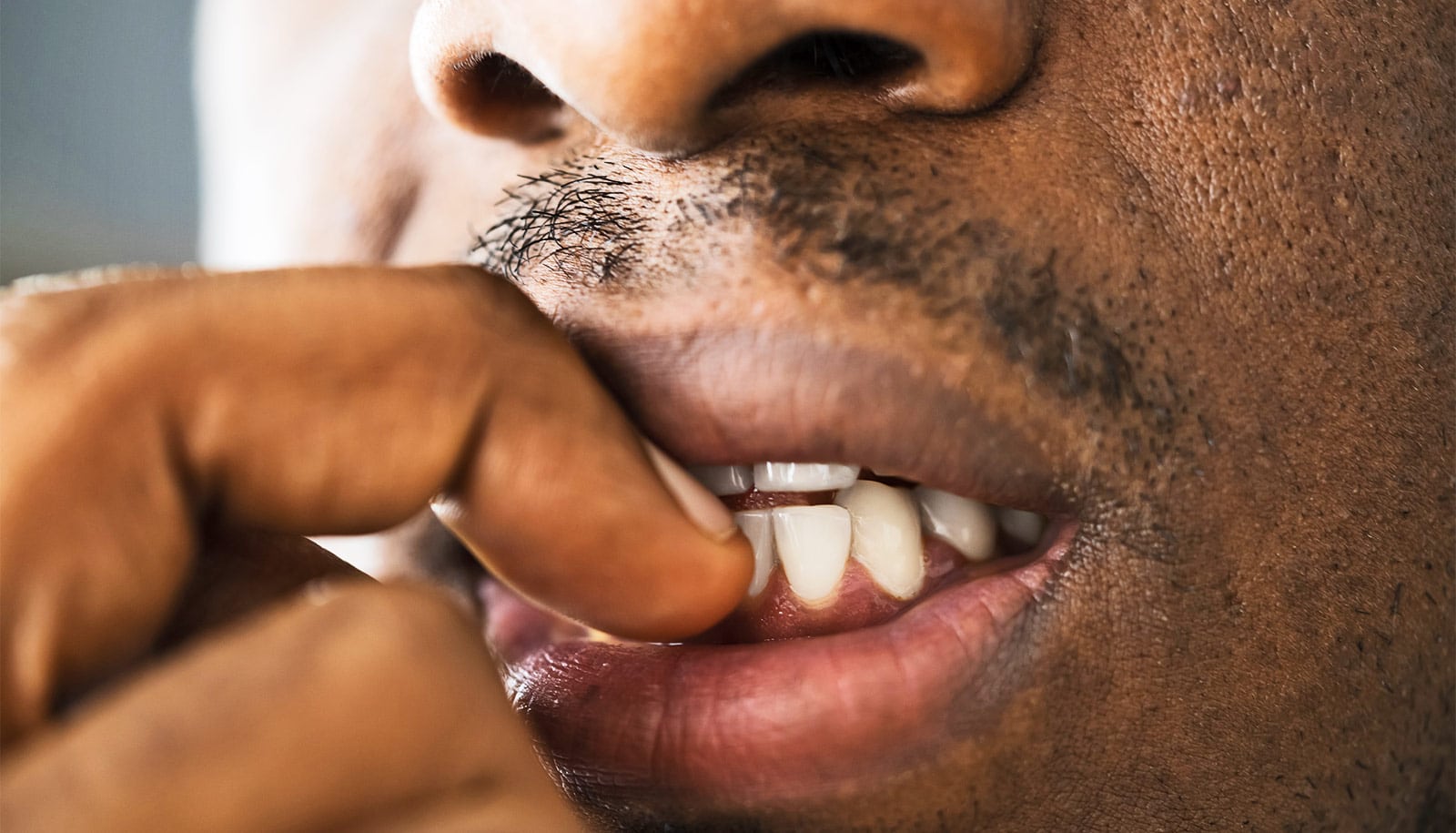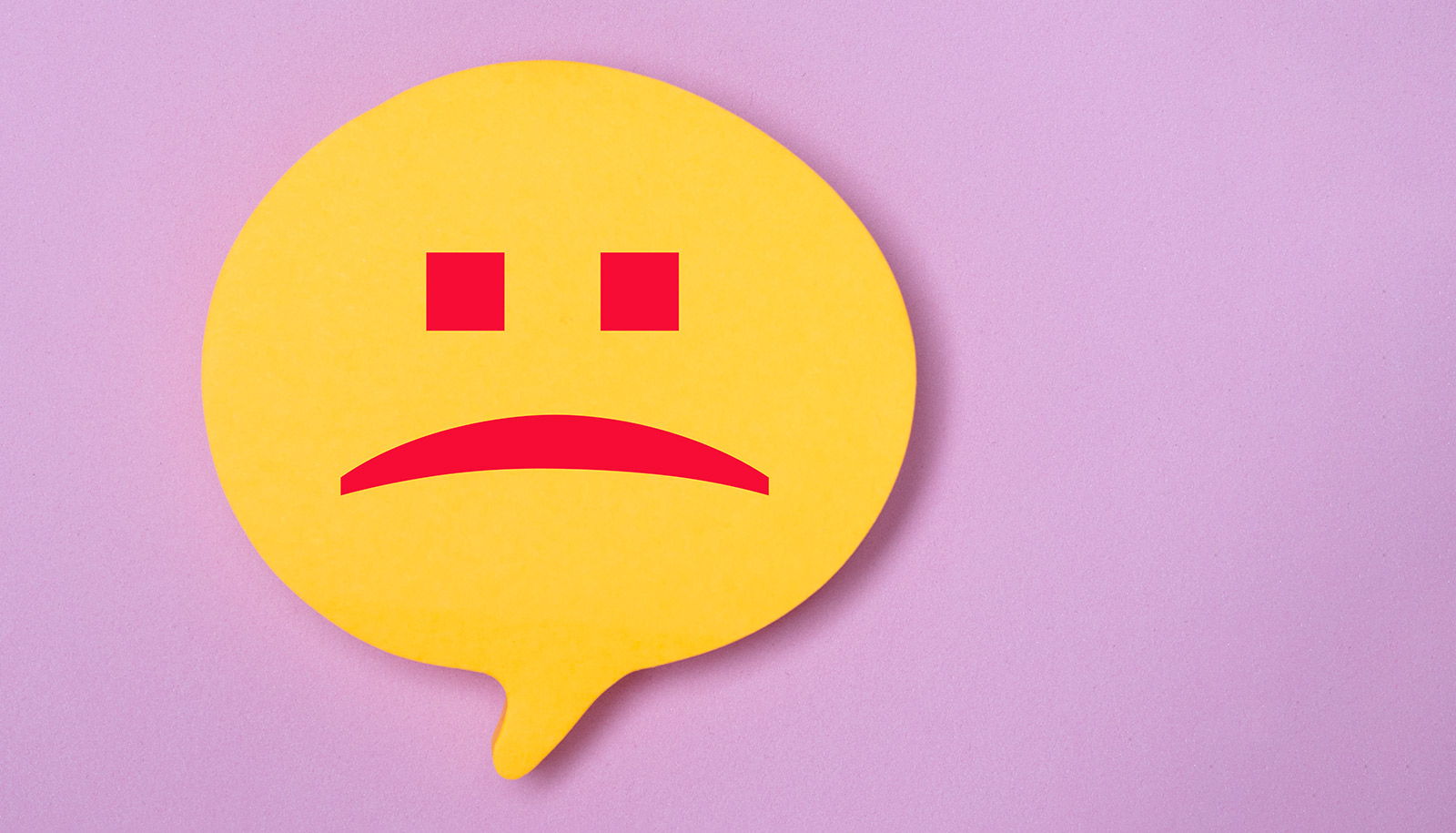The babies of anxious mothers may spend more time focusing on threats in their environment, new research suggests.
“Once we learn more about the pathways to anxiety, we can better predict who’s at risk…”
In a study, researchers used eye-tracking technology to measure how long babies spent looking at happy, neutral, and angry faces. They found that the babies with anxious moms had a harder time looking away from an angry face—which they could view as a threat—than babies whose moms were not anxious.
Koraly Pérez-Edgar, a professor of psychology at Penn State, says the findings—which appear in the journal Emotion—could help give clues about which children are at risk for developing anxiety later in life.
“Once we learn more about the pathways to anxiety, we can better predict who’s at risk and hopefully help prevent them from needing treatment later on,” Pérez-Edgar says. “Treatment is difficult for the child and parent, it’s expensive, and it doesn’t always work. If we can prevent anxiety from developing, that’s a whole lot better. Let’s find out which kids are at the highest risk and intervene.”
Previous research has found that focusing too much on threat could potentially increase anxiety, and some forms of therapy focus on turning attention away from threat as a way to lower anxiety.
“Paying too much attention to threat, even as infants, could possibly set up this cycle. The more you fixate on threat, the more opportunity you have to see the world as a threatening place, which could help lead to more anxiety,” Pérez-Edgar says. “Additionally, we think that risk factors in biology and potentially mom’s anxiety could also make that more likely.”
To examine the relationship between a mother’s anxiety and her baby’s attention to threat, a research team led by Pérez-Edgar recruited 98 babies between the ages of 4 and 24 months.
The babies’ mothers answered questions about their anxiety levels, and the babies were placed in front of a screen that was equipped with an eye tracker—a strip that ran along the bottom of the monitor and followed the movement of the babies’ irises using infrared.
As each baby focused on the screen, their gaze was measured while happy, neutral, and angry faces appeared one at a time. Once the baby was focused on a face, a second image was flashed in their peripheral vision to distract them.
“By the time you’re a few months old, a reflex develops where you’ll automatically turn and look if something pops up in your peripheral vision,” Pérez-Edgar says. “This became a conflict for the babies, because they were focused on the face but then had this reflex to turn and look.”
Newborn brain may hold predictors of anxiety, depression
The researchers found that the more anxious a baby’s mother was, the more time her baby spent looking at the angry faces before turning to look at the image in their peripheral vision. This suggests that the babies with anxious moms had a harder time disengaging from a potential threat in their environment.
Additionally, the researchers found that the age of the baby did not matter. The babies with anxious moms spent a longer time looking at the angry face whether they were four or 24 months old, suggesting a potential genetic element.
“It doesn’t seem like the babies are learning to pay more attention to threat from their anxious moms. If that were true, the older babies might have more trouble turning away because they’ve been around their moms longer than the younger babies,” Pérez-Edgar says. “This seems to suggest that there may be a shared genetic or biological component.”
Pérez-Edgar says the results give powerful clues about where to keep looking to learn more about how anxiety develops in children. In a future study, Pérez-Edgar and colleagues will take a closer look at how mother’s anxiety affects babies over time, instead of at one instance.
Kids don’t sleep as well when mom has insomnia
Additional researchers who contributed to this study are from Penn State and Rutgers University.
A National Institute of Mental Health grant supported this research.
Source: Penn State



